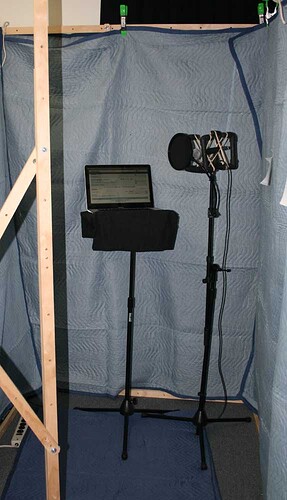Hey everyone, my first post on this forum ! ![]()
I have a couple of noob questions about using audacity, it would be great if you could offer me the answer for them.
-
First of all, i have a very cheap microphone which i am pretty sure is mono only. Uptill now i have been recoring in stereo and logicly this recording was louder then mono because stereo basicly recorded 2 same mono channels and when you play 2 of them at once as oposed to 1, its louder. Is this the same as if i were to record in mono and then just copy this channel and paste soo there would be 2 clones ? I think it is the same.
-
I have a bunch of recordings containing human speech but they are quite flawed due to bad microphone quality and the noice around. Microphone as it is produces a lot of noice/hiss and such, but if you add cars, trucks, wind, birds and other such things…you can barely understand the speech. What are the options of clearing such recording to make it less pleasant to hear and understand speech easier ? I know it is not as easy as it is on movies where they have birds and human speech on same recording and they simply click “remove bird singing” and that i would probably have to try different things.
But where would be a good place to start ? I tried playing around with normalize, amplify and level. I tried to see what the difference in each of those is but to me it didnt really sound different ( if i compared them to eachother ) and was very similar to general Db boost. This recordings are not all the same, in some for instance you can barely hear the car since it is very far away and in those it would be best to just remove noice, in others the microphone is basicly next to a running car and here it would be more importaint to remove the car noice.
I tried noice removal but i wasnt very lucky. All i did was remove almost everything and got a bunch of robotic sound. In recordings where speech is louder i had more luck with noice removal, but on recordings where “other noice sources” are louder then the speech itself, removing noice did more damage then good. -
Right now i am recording at 32bit 44,100Hz and i export either to Wav 16bit or Flac 24bit ( should i notice the difference in those 8 bits ? ). Since i can only export to 24 bit, is it worth recording at 32bit, does 24bit conversion simply cut those 8 away or does it use them somehow ? I have been wondering if it is worth to record in 32bit anyway since my microphone is of such low quality and 32bit vs 24 or 16bit makes the recording a lot larger and editing slower. As far as exporting files goes…flac 24bit ( or 16bit ? ) is the best ?
I dont suppose there is some quick microphone trick i can use to improve its recording, mostly that background noice bothers me. I even tried recording in complete silence and it records noices i cannot hear at all.
This is all for now, i hope you will be able to answer my questions. I am having lots of fun with Audacity, great program indeed !
